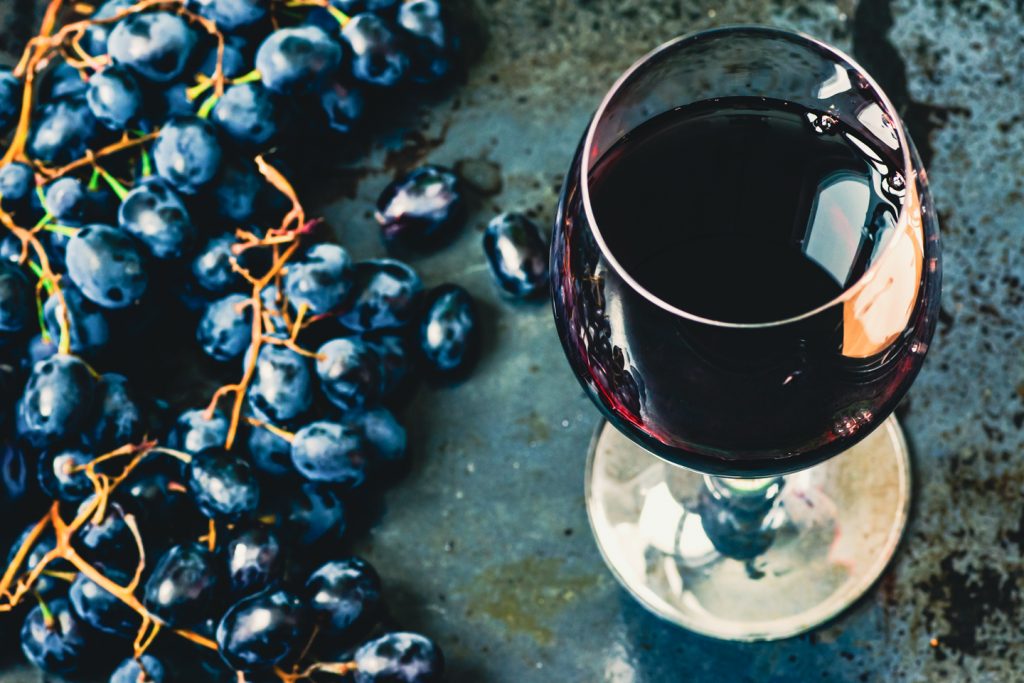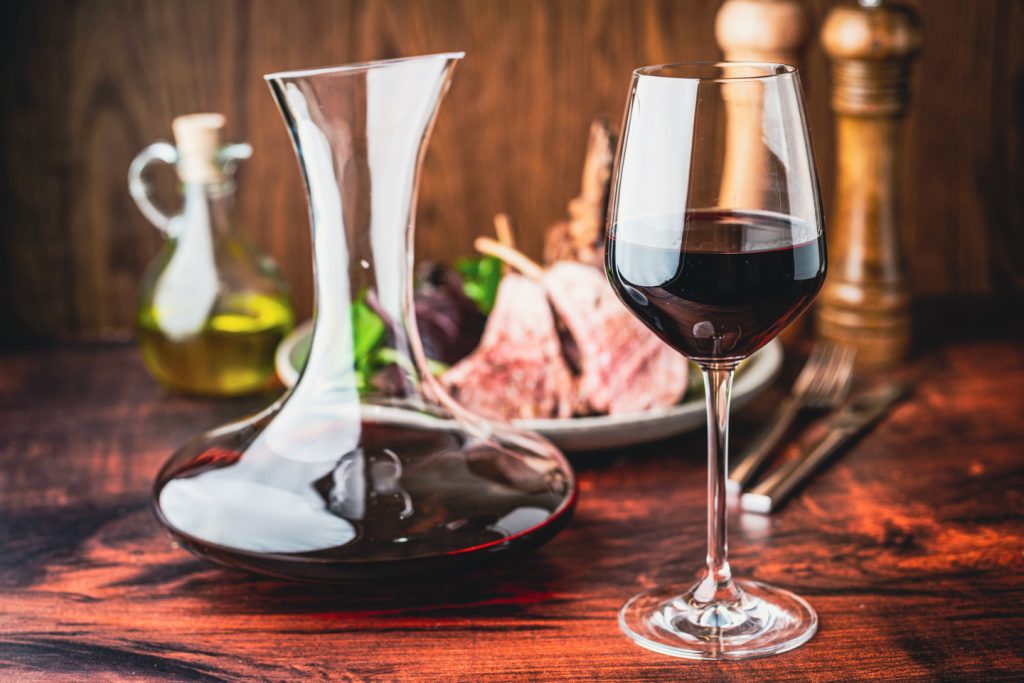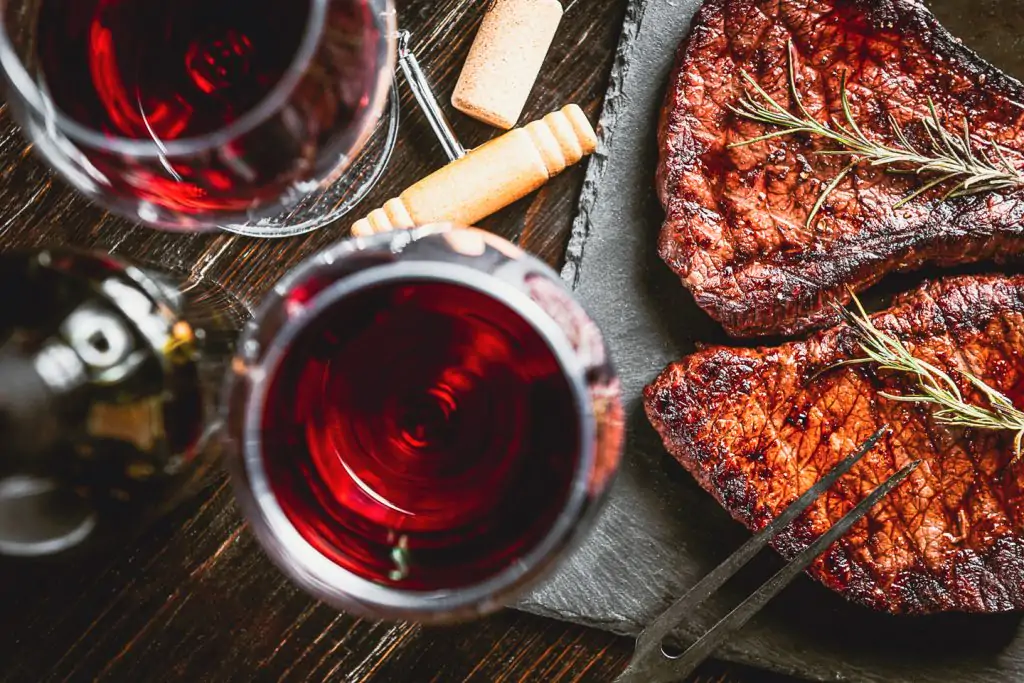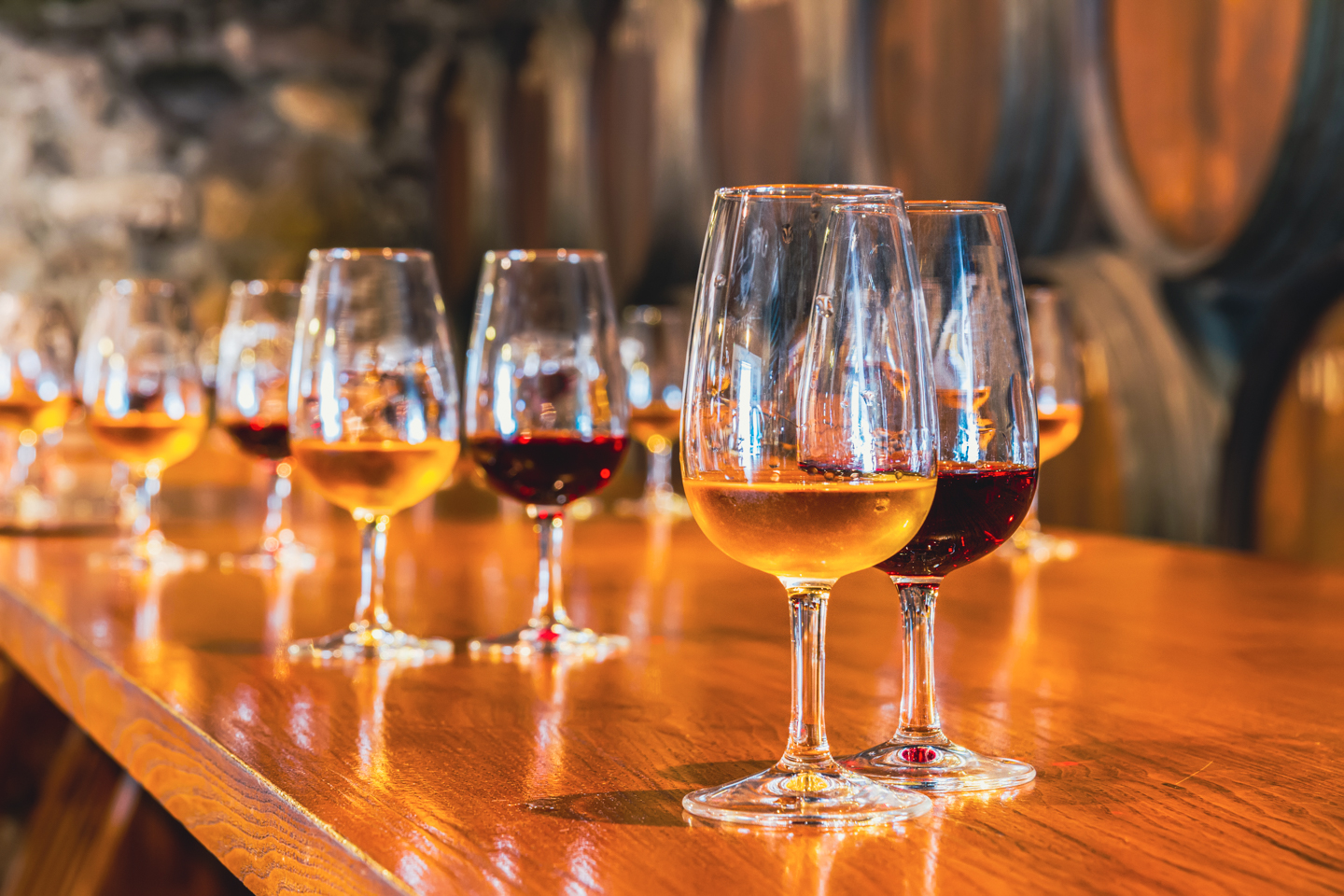Red Wine Types: The 4 Most Popular Red Wines in NZ
Red wine is seriously cool. It’s great to share with friends around a campfire, to sip on when you’re all snuggled up on a cold winter’s night, or to take along to a BBQ or pizza night. But how do you know which red wine types to buy? There are just so many different varieties and styles. The red wine section in any supermarket is stacked with them. Don’t worry if you’re confused — you’re not alone.
The world of red wine can be tricky — even when you do have a grasp of the basics. And the back of the bottle doesn’t always help. Notes of diesel and old leather? Seriously? Like that’s a good thing?
We’re going to keep things simple here. We’re just covering the four top red wine types in New Zealand. Why? Because there are very good reasons why people love these red wines. And getting your head (and taste buds) around a smaller set of wines is the best way to work out why you like some wines more than others. It’s also super helpful if you’re matching wine with food or trying to choose the right bottle for an occasion.
Knowing a bit about the structure of red wine can be a good idea before you start — since that’s what the info on wine labels is based on. You can read more about wine structure here.
We’re going to talk about: Pinot Noir, Shiraz/Syrah, Merlot and Cabernet Sauvignon. Feel free to use the links to jump ahead.
If you’re all good to go, let’s crack open some wines.

Pinot Noir
Pronounced: pee noh nwahr
So why do people fall in love with Pinot Noir? Because it’s one of the most versatile, food-friendly red wine types. It’s also a bit lighter — that makes it a great choice for people discovering red wine for the first time.
This medium to light-bodied wine has soft, silky tannins — that just means it’s really easy to drink.
The taste might remind you of cranberry, cherry, plum or strawberries with a hint of black olive, mushroom or herby flavours. Because it usually spends time in an oak barrel, Pinot Noir might smell a bit like cedar oak.
No wonder Pinot Noir is one of New Zealand’s favourite red wine types. The downside is that you usually have to pay a little more for a bottle of Pinot Noir — this grape is quite tricky to grow.

Foods that go well with Pinot Noir
Pinot Noir goes really well with a range of food. That makes it one of the best red wine types to take if you’re off to a friend’s place for dinner. It’s a fantastic buffet or ‘pot luck’ wine, because it goes with so many foods.
This wine’s low tannins makes it one of the few red wine types that goes with grilled salmon or fatty fish. Lean meat, duck, pork, lamb or mushrooms are all great matches for Pinot Noir. It will add a boost to vegetarian dishes made with lentils or chickpeas.
Sauces: Garlic, tomato, or cream-based sauces work really well with Pinot Noir.
Red wine tastes pretty horrible with desserts — sugary food just makes the wine taste bitter. But Pinot Noir does go surprisingly well with dark chocolate.

Pinot Noir: Serving and Age
Pinot Noir should be aged for 2-5 years and served around 15 degrees Celsius (60 F).
Grab yourself a large, round glass, if you have one. These are supposed to capture the ‘delicate aromas’ of the wine.
History of Pinot Noir in New Zealand
Pinot Noir is grown throughout the South Island and in parts of the North Island. The grapes were first planted in Hawkes Bay back in 1889, but it wasn’t commercially bottled until 1987. That’s when things really started to take off. New Zealand Pinot Noir now has a worldwide reputation and rave reviews.
Pinot Noir Regions to Look for in New Zealand
Central Otago is famous for its Pinot Noir, especially The Gibbston Valley. Wines from this region taste of raspberry, strawberries and fresh herbs with a hint of spice. Pinot Noir from Marlborough and Nelson are typically quite fresh, with an acidic ‘zing’ balancing out the tannin, and tasting of raspberries, cherries and plums. Pinot Noir from the Wairarapa is rich and warm, with flavours such as dark plum and chocolate. These wines are said to have great structure — that just means that they linger for longer in your mouth. You might pick up more savoury, earthy flavours in wines from North Canterbury as well as the dark berry fruit with spicy notes.
Countries Known for Pinot Noir
As you’ve probably guessed from the name, Pinot Noir originated in France, in the Burgundy area. But, thanks to its popularity, Pinot is now being grown in Germany, the cooler regions of America (Oregon), Australia (Melbourne and Tasmania) and coastal areas of Chile. If you decide you’re a fan of Pinot Noir you might want to check out a few — each has its own take on this favourite grape.
Shiraz/Syrah
Pronounced: sher-AHZ or si-raah
Shiraz and Syrah are really the same wine known by two different names — they’re made from exactly the same grape. Syrah is the original name for this French wine — then the Aussies complicated things by calling it Shiraz. If you want to say Shiraz like an Aussie, just drag out the last syllable!
Syrah/Shiraz is all about spicy flavours like plums, dark stone fruit and juicy blackberry, with a hint of cracked pepper. This wine packs a real punch when it comes to flavour. Cooler climate styles tend to taste a little tangier.
These days the name Shiraz tends to be used in warmer countries. Winemakers in cooler climates, like New Zealand, often stick with the French name, especially if they’re aiming for a classic French style. You’ll come across both names when shopping. Don’t let that confuse you — it’s pretty much the same wine under a different name.
Syrah is loved for its smooth texture and spicy flavours. It also has one of the highest levels of antioxidants. So it’s good for you too — kind of…

Foods that go well with Syrah/Shiraz
Syrah is a fruity wine. That means you can pair it with spicy food such as Indian, Mexican or Italian. Spicy chicken, gamey meat like venison, or rich beef stews are all great food suggestions.
Syrah/Shiraz is fantastic with fatty meats — think pepperoni pizza. Anything smokey from the grill will match the wine’s hints of black pepper and smoke. Vegetarian pairings include grilled vegetables, mushrooms, eggplant, and bean casseroles.
Syrah/Shiraz is one of the red wine types that goes really well with cheese, especially gouda and aged cheddars. A fruity Aussie Shiraz is bold enough to serve with salty blue cheeses.
Sauces: Go for sweet tangy BBQ, hoisin, garlic, tomato and cream.
Thanks to its chocolatey smell, a glass of Shiraz can actually work with a dark chocolate cake.

Shiraz/Syrah: Serving and Age
If you’ve got some big red wine glasses that are slightly tapered at the top, then these are perfect for Syrah. That leaves plenty of swirling room to open out the flavours.
Syrah/Shiraz should be served between 16 – 18 degrees Celsius. As strange as it seems, you might need to pop it in the fridge for 30 mins in the summer!
Shiraz/Syrah is even better if you can keep it for 4-5 years in a dark cupboard— away from the flatmates. This gives the tannins a chance to soften. You can keep it for up to 10 years, if you can bear to wait that long. Just remember, age doesn’t perform miracles. An ordinary wine probably won’t taste that much better — you might as well enjoy it now.
History of Syrah/Shiraz in New Zealand
Syrah has a long history in New Zealand and was first planted in the 1800s. Plantings have doubled in the last decade because the wine has become so popular.
Shiraz/Syrah Regions to Look for in New Zealand
While you can find Syrahs from the South Island, most come from the warmer areas in the North. Hawkes Bay has been making delicious Syrah for almost 200 years — it’s typically rich with plum and black pepper flavours. Most Syrah from Auckland is grown on Waiheke Island — they produce full-bodied wines with brambly, peppery flavours. Northland’s warmer climate and long growing season means their wine has softer tannins, spicy berry fruit and a flowery smell.
Countries Known for Shiraz/Syrah
You’ll find a heap of Australian Shiraz on the shelves — it’s a bit of a rockstar there and made by 4 out of 5 wineries. Aussie Shiraz is big and bold, (no surprises there) with spicy fruit and a slightly sweet aftertaste. Be sure to check out some wines from Chile too — they’re ramping up production and making some fruity styles that are getting rave reviews. If you’re keen to go ‘old school,’ try a classic French Syrah, you’ll probably notice a more minerally taste and maybe wild herbs and leather (trust us, that’s a good thing).
Merlot
Pronounced: mer low
Merlots are a great choice for people who are just getting into red wine. They can be cheaper than other varieties (like Pinot Noir) and are soft, fruity and drinkable. A medium body and smooth texture makes Merlot one of the most popular and versatile red wine types.
Merlot won’t make your mouth pucker up too much. When drinking Merlot you should pick up on black cherry flavours with a chocolatey aftertaste. Don’t be put off if the label refers to ‘tar and cigar-box aromas.’ These will be very subtle and are a common feature of Merlot. Winemakers often use oak barrels to add depth to the flavour.

Foods that go well with Merlot
Merlot goes with plenty of foods. It’s fantastic with Italian classics like Tuscan chicken, Bolognese and Lasagne. Merlot also goes well with hamburgers, nachos, and beef casseroles. Great vegetarian matches include roasted butternut, roasted red peppers and beets or any tomato-based pastas. You can match Merlot with mild Indian dishes such as lamb, but be a bit careful — too much spice will overwhelm the taste of the wine.
When matching cheeses with these red wine types, look for Havarti, Aged Cheddar, ripe Camembert or Jalsberg.
Sauce: These red wine types love a rich, tomato-based sauce.

Merlot: Serving and Age
17 degrees Celsius is the best temperature to serve Merlot. Pop it in the fridge or stick it near the fire if you think you need to.
Merlot is often designed to be enjoyed straight away and should be drunk within 5 years.
If you’ve got one of those massive glasses, now is the time to get it out! Don’t be tempted to fill it up though — the idea is to create distance between the wine and your nose. You also want to leave yourself some swirling room.
History of Merlot in New Zealand
Although Merlot wasn’t a big hit until the 1980s and 90s, the grapes were planted around a hundred years earlier. Now Merlot is the second most planted red wine grape.
Merlot Regions to Look for in New Zealand
These red wine types are made in the warmer climates of Northland, Auckland, Gisborne, Hawkes Bay and Marlborough. New Zealand Merlot tends to have higher tannins and an earthier flavour. That’s because of our cooler climate.
Countries Known for Merlot
Aussie Merlots are usually made for early drinking, so you can enjoy them straight away. Shop around, because you’ll usually find a good bargain somewhere. Top regions to look for are Coonawarra, Margaret River, McLaren Vale and the Barossa Valley. You’ll also find great Merlot from Tuscany in Italy, Bordeaux in France, California, and Chile. Just remember the general rule: fruitier wine comes from hotter countries.
Cabernet Sauvignon
Pronounced: cab er nay saw vee nyon
Cabernet Sauvignon is one of the world’s most popular red wine types. It’s commonly known as Cab Sav, or even Cab if you’re really feeling lazy.
This wine is pretty much the ‘heavy metal’ version of red wine — the rich, fruity flavour will really get your taste buds rocking. Cabernet Sauvignon also has a higher alcohol content than other red wine types.
You’ll definitely taste blackcurrant, black cherry or ripe plums. Time spent in oak barrels gives Cab Sav even more punch. You might pick up hints of warm spice, black pepper, vanilla and licorice, and you’ll often get a whiff of leather or tobacco. Don’t worry — that’s a typical Cab Sav thing.

Foods that go well with Cabernet Sauvignon
This ballsy wine needs to be paired with rich, substantial foods. It’s the classic wine to serve with steak or roast beef. Because it’s so dry, you need to match it with fattier meats. Sausages and hearty burgers are perfect.
Portobello mushrooms and eggplant are great vegetarian choices. Avoid soft, delicate cheeses, they’ll just be overwhelmed. You’ll want something punchy, like a tasty cheddar or stinky blue.
Sauce: Peppercorn sauces are the perfect choice for these red wine types.

Cabernet Sauvignon: Serving and Age
Cab Sav should be served between 16-18 degrees Celsius. Because it has lots of tannin, this wine will be happy in a cupboard for up to 10 years.
If you’ve bought an older wine with sediments in the bottom, don’t worry — they won’t hurt you or affect the taste of the wine. You can always try to filter them out, or get super fancy and decant the wine into some sort of jug.
Decanting wine does open up the flavours and will improve the taste of newer wines.
Or, if you just can’t be bothered, you can aerate the wine in your glass. Choose the biggest red wine glass you can find — that way you can swill it around lots and really look the part.
Cabernet Sauvignon Regions to Look for in New Zealand
In New Zealand, 90% of Cabernet Sauvignon is grown in Hawkes Bay and Auckland. Our cooler climate styles tend to be less ‘jammy,’ with leafy blackcurrant flavours and savoury notes.
Countries Known for Cabernet Sauvignon
Australia makes some excellent Cabernet Sauvignons. Regions to look for are Coonawarra in South Australia, Margaret River in WA, and Victoria’s Yarra Valley.
Cab Sav from the Napa Valley in California is known for its rich, jammy fruit flavours. Argentina also has the perfect climate for growing Cabernet Sauvignon. You’ll taste ripe blackberries, cherry, spicy pepper and vanilla, with maybe a hint of mint.
Still Feeling Confused?
If you’re still feeling a bit confused, that’s fair enough. You might even be wondering how something with such a simple name can be so complicated. The best thing to do is start small and try a few of these red wine types for yourself.
Visiting the wineries is a great way of finding out what you like, without having to buy a whole bottle. And always check out the free tastings in the supermarket and bottle shops — they make shopping way more fun. You can check out our website for more help. We’ve got friendly in-house experts who are waiting to help you.
The most important thing is to enjoy yourself. Soon you’ll be swirling your red wine like a pro. And if you do find yourself sticking your nose into the glass for a good sniff, or swishing your wine around like mouthwash to truly ‘appreciate the texture,’ don’t worry. It’s all part of the fun.
You certainly don’t need to buy special wine glasses, or to understand all the fancy terms. None of that stuff matters. What really matters is finding red wine types that you love.
Food matches are completely optional — but if you are cooking something tasty, or splashing out on a midweek take away, it makes sense to pick a wine that will make your meal taste even better. Of course red wine is fantastic to drink all on its own — preferably in the company of some good mates.
You can learn a heap more stuff about specific red wines on our website. We’ve set up our wine descriptions to make it easy for you to find the perfect bottle for any occasion. And if you want help from our in-house experts, just flick us a message through our website or give us a bell on 0800 BRINGA (0800 274 642).







